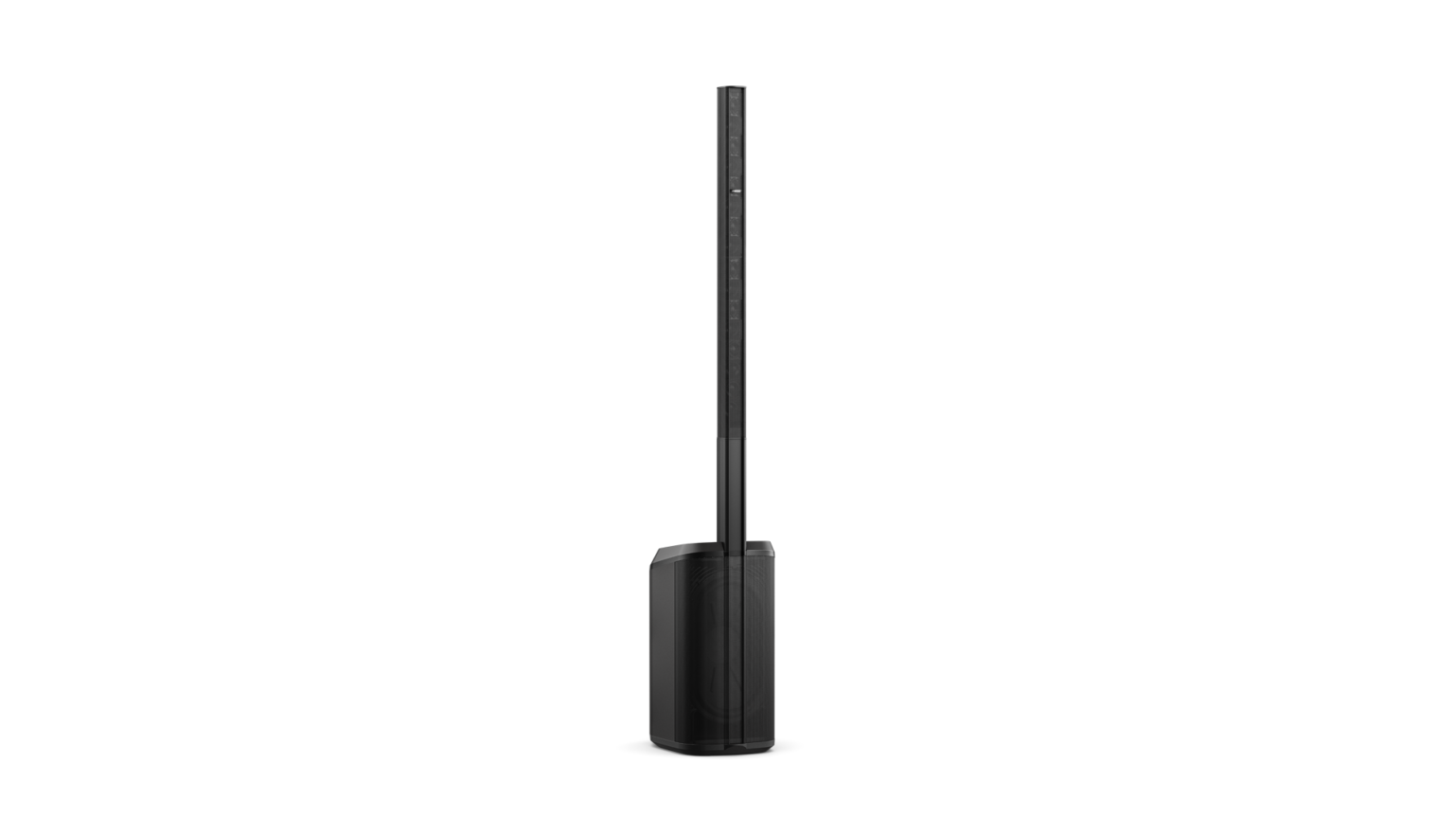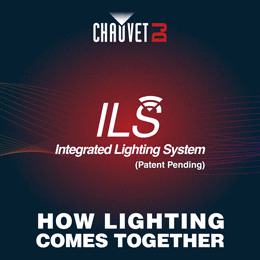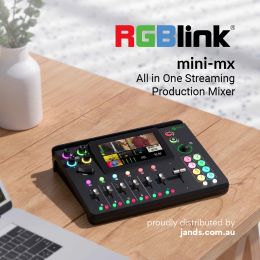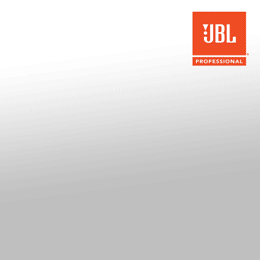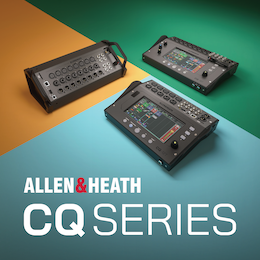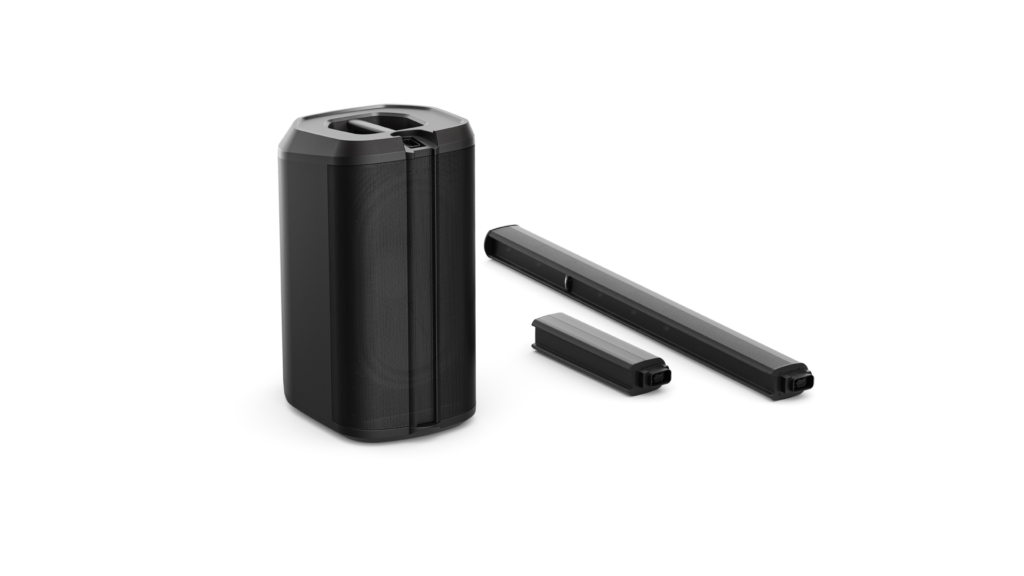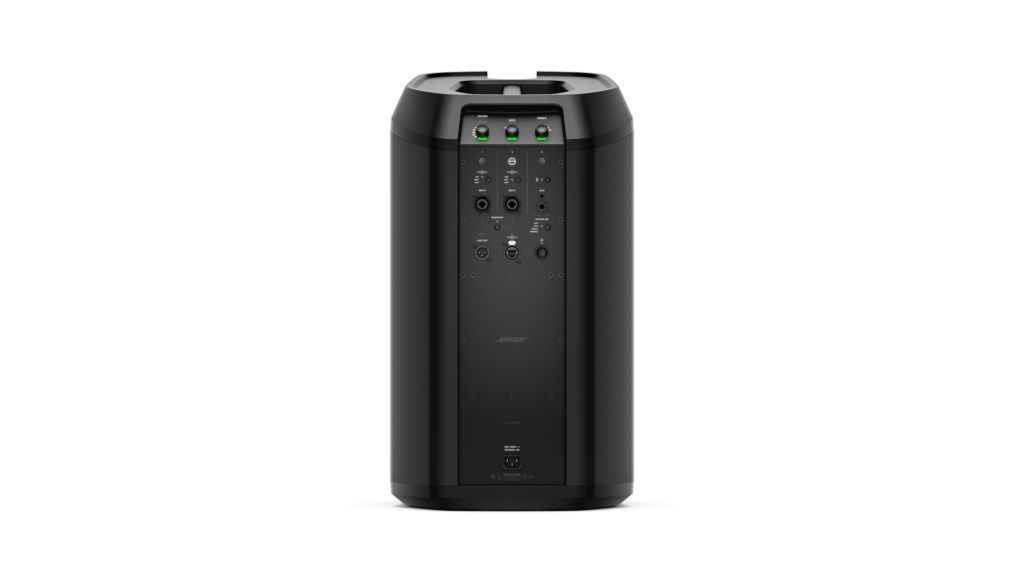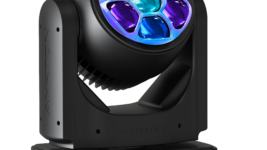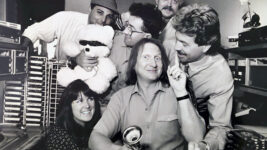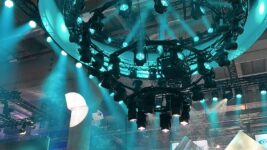Subscribe to CX E-News
Bose introduced the L1 line array some years ago now. I remember the original system had a large roundish base into which the column sections were placed, and a separate subwoofer. Subsequent revisions to the product saw the base become a foldable unit, which was better for transport. The L1 Pro16 takes this one step further.
The underlying idea of the L1 Pro product family seems to be to provide a healthy compromise between full range, controlled sound reinforcement and portability. This much certainly holds true of the L1 Pro16.
The L1 Pro16 comprises several parts: the upper array section, an extender module, and the subwoofer / amplifier unit. Three pieces. The sub has a carry handle, and the array and extender piece both travel in a nice carry bag together. Add a power cable and a mic and you have a PA that you can carry into the venue in one trip. The system ships in one carton, which makes the box a bit of a weird shape but at least you know all the bits are contained in one place so it can’t be partially shipped by a careless carrier!
Setup of the system really couldn’t be much simpler: plonk the sub on the floor, then place the array section (plus or minus the extender part) into the keyed receptacle on top. Turn on the power, plug in your mic, and turn it up. Job done. It literally takes less than a minute, which makes this super appealing for anyone needing to get into a space and set up quickly.
The array module comprises 16 two-inch neodymium drivers. They are alternatingly offset 45 degrees left and right, and the lower two drivers also aim downward to form the familiar line array curve we’re used to seeing on much bigger systems at concerts. The idea of this is to maintain control over the audio dispersion. Practically, this only works down to a certain frequency due to the limits of physics, but within that range the pattern control seems quite decent. Nominal coverage of the array is 180 degrees horizontally, and vertically coverage begins in line with the top of the stick and extends down a bit beneath it. This means you can stand the system on the floor or a stage, and with judicious use of the extender piece achieve a suitable coverage.
The sub comprises an 18” x 10” driver, which gives it a surprising amount of punch. While Bose probably selected this because it looks good, a convenient side effect is that it narrows the sub allowing you to bring its centre of gravity closer when you carry it. It’s definitely easier to carry than any of the PA subwoofers I own.
The onboard electronics module includes two mic/instrument inputs on combo jacks, each with an encoder above it. Pressing the encoder alternates between adjusting volume, bass, treble, and reverb level for each channel. It’s very easy. Another button activates common phantom power across both inputs. Each channel can also use a mic or instrument “preset” which is activated or bypassed by pressing the button adjacent the input. An extensive selection of presets is available using the L1 Mix app on your phone.
Additional to these inputs, dual 3.5 and 6.5mm TRS sockets allow connection of an auxiliary device, and there’s a Bluetooth facility too. A third encoder offers similar controls to the first two, sensibly minus the reverb option. Power is one IEC cable, and a ToneMatch port allows you to connect a Bose proprietary mixer externally for more inputs. There’s also a line out on XLR which you could use to record, or feed another system.
In practice the L1 Pro16 system seems to do what it says. I switched it on and played some tracks via Bluetooth. They sounded like they should. I plugged in an SM58 and turned up the level, which achieved a good, balanced vocal sound. Standing right in front of the array I had to turn the mic up well past what I would expect before the system would feed back. It’s remarkably robust in that regard. I tried some of the preset EQs; these seem to add a lot of sparkle and I actually preferred the system in its default state. It will be a personal choice.
Bose tout the L1 Pro16 as suitable for DJs, singer-songwriters, and small groups. I’ve worked enough events to know that not every DJ will respect the limits of this system, so while I wouldn’t unconditionally endorse it for that application, I do think it’s a great choice for singer-songwriters and small groups. It’s very easy to achieve a good vocal sound, the reverb is nice and natural, and the L1 Mix app makes it easy to adjust the mix from stage.One more application I thought conspicuously absent from the website is corporate events. The gain before feedback, attention to elegant visual detail, and unimposing form factor will surely see the L1 Pro16 find great appeal.
Bose L1 Pro16 – The Specs
J-shaped line array
16 articulated 2” neodymium drivers
Coverage: 180° H x 0° to -30° V
Low frequency (-3 dB): 42 Hz
Frequency Response (+/- 3dB): 42Hz–16kHz
Max SPL: 124dB
Wattage: Sub 1,000W, Array 250W, Total 1,250W
Dimensions
Width: 35.5 cm
Height: 201.2 cm
Depth: 45.6 cm
Weight: 24.35 kg
Subscribe
Published monthly since 1991, our famous AV industry magazine is free for download or pay for print. Subscribers also receive CX News, our free weekly email with the latest industry news and jobs.


